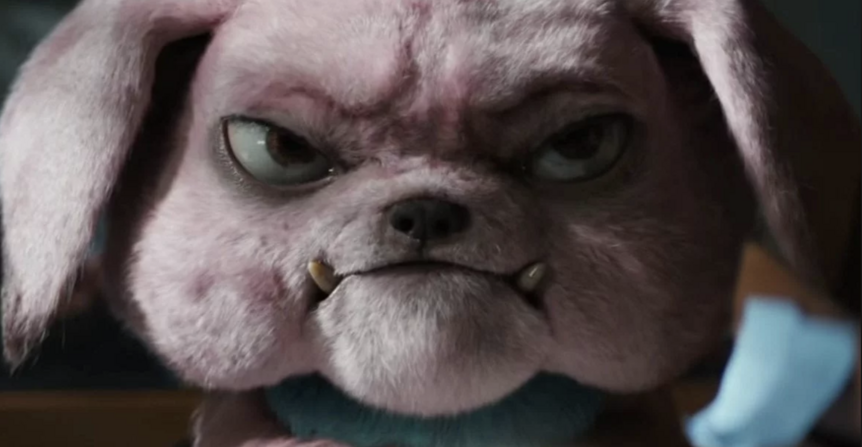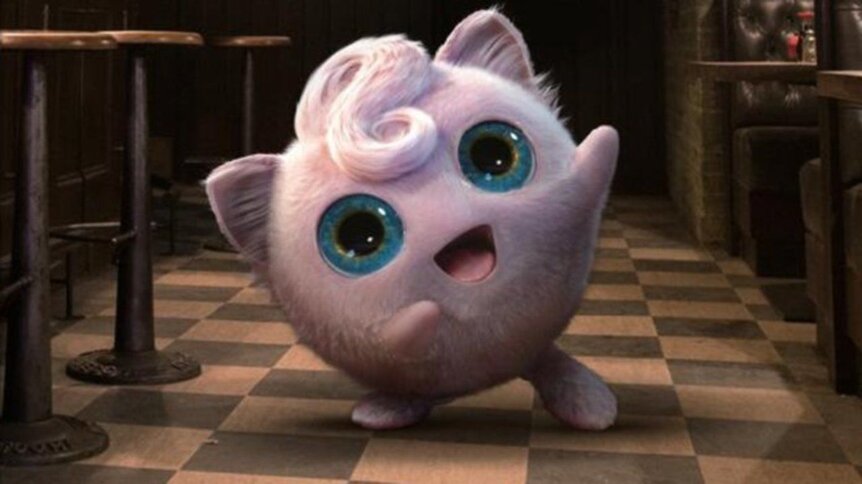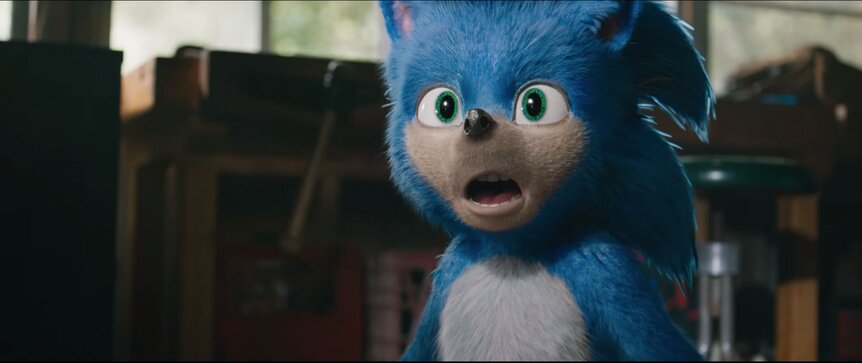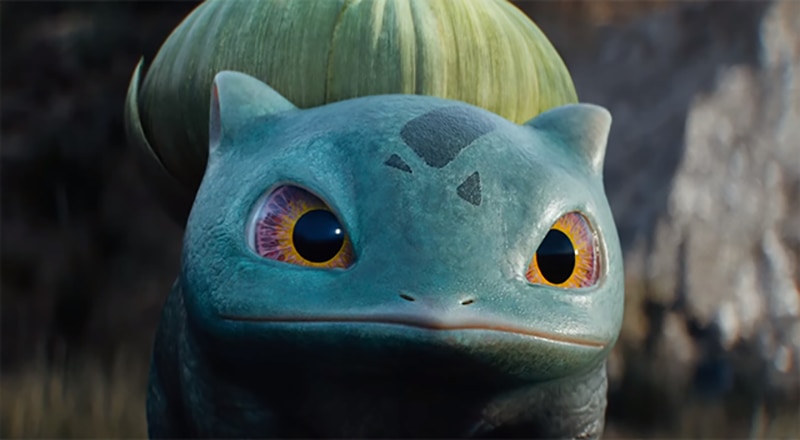Create a free profile to get unlimited access to exclusive videos, sweepstakes, and more!
Why Detective Pikachu got 'real' Pokémon so right while Sonic bit the dust
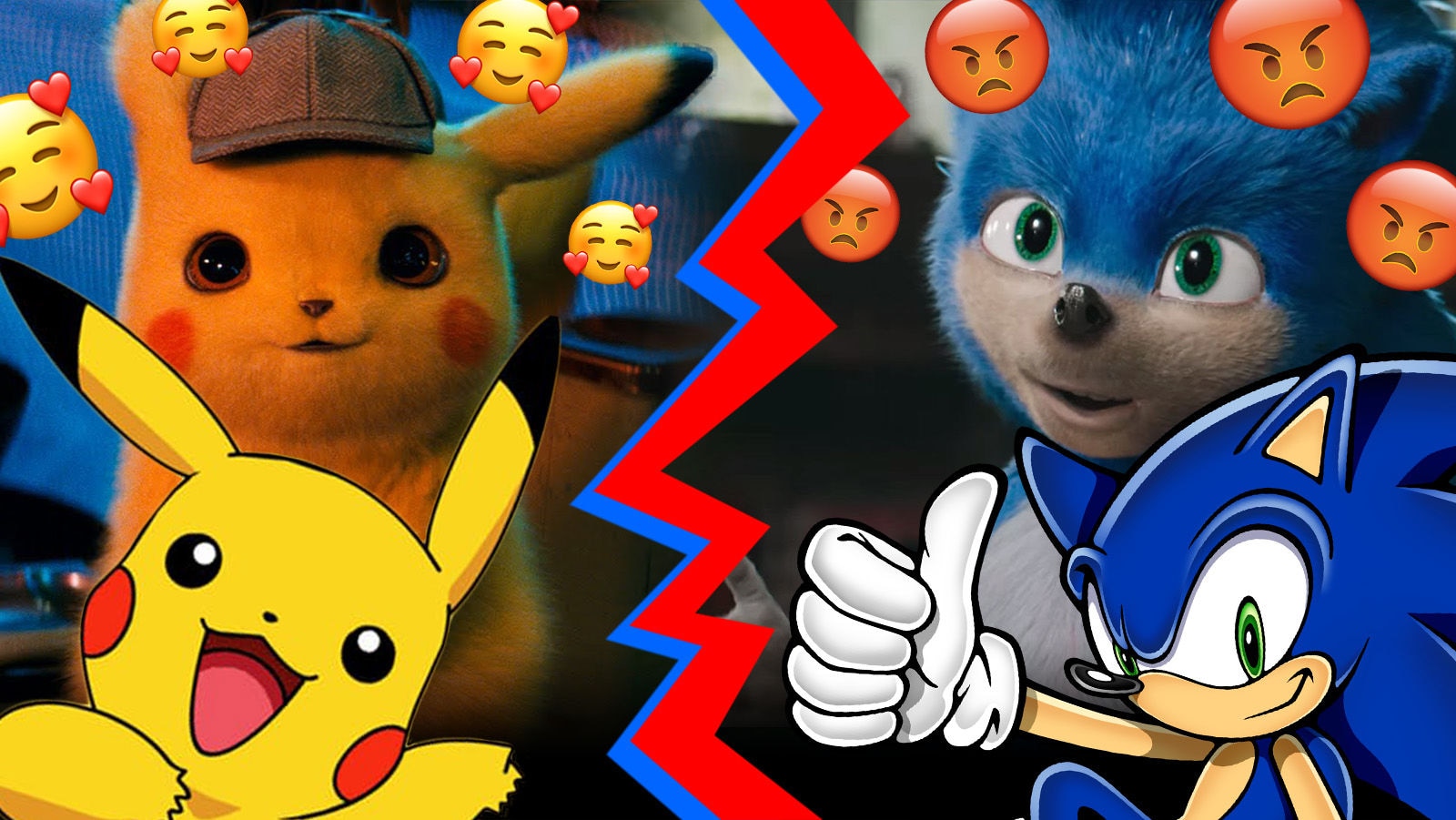
It's been an up and down month for beloved '90s video game characters. Audiences embraced a fuzzy 3D Pikachu and gave Pokémon: Detective Pikachu a smash opening weekend; a few weeks earlier, the internet went into panic mode when it caught a glimpse of a new CGI Sonic's furry blue legs, and then revolted en masse when the humanoid hedgehog flashed his pearly white teeth. The backlash was so severe that Sonic The Hedgehog director Jeff Fowler tweeted a promise to redesign the character before the movie's fall release.
Why the huge discrepancy? Fans are picky and oftentimes capricious, sure, but like most other things in modern life, you can also attribute some of the blame to science, psychology, and technology.
For decades, movie industry effects houses struggled to bridge what's known as the Uncanny Valley. It was a little bit like flying too close to the sun; the closer a digitally created person inched to looking real, the more noticeable — and frankly freaky — their little digital imperfections became. The gap was most evident in films made in the mid-aughts, including misfires like Robert Zemeckis' The Polar Express (2004) and Beowulf (2007), which featured CGI humans that looked as if they were wearing rubber masks or were aliens that based their disguises on slightly blurry Polaroid photos.
The development of advanced facial performance capture and other tools have helped the film industry to largely transcend the gap between horrifying and human (at least on screen). Now, filmmakers are facing a second kind of Uncanny Valley: Turning inherently fantastical animated characters into "realistic" creatures that look like viable carbon-based life forms for live-action movies, without rendering them terrifying grotesqueries or freaking out the fan base that latches on to old childhood favorites like security blankets.
"The main goal was to translate the 2D Pokémon into 3D, real-looking creatures with realistic textures and anatomy, as if they were actual animals," Ken Barthelmey, a creature designer on Detective Pikachu, tells SYFY WIRE. "The problem is when you design it too realistic, it will look creepy, and when you stay too close to the original it will look cartoony. In the case of Pokémon, each creature had to look cute and adorable, which made the work even more challenging."
Getting it objectively "right" isn't really possible when playing to an audience of millions, especially when each viewer has different memories tied to their nostalgia and guttural feelings that are hard to pinpoint. Likewise, navigating visceral reactions is not something that can be solved solely through algorithm or computing power, but there are certain principles that can help increase the likelihood that you won't spark thousands of angry tweets or launch endless mocking memes with your designs.
On Detective Pikachu, it was all about balancing competing interests.
The Pokémon Company, which oversees the franchise, prioritized retaining some of the imaginary characters' most prominent and most recognizable features.
"They were very specific about the sharply angular shapes from the anime," Barthelmey says. "Each design had to match the original perfectly and it was very important to keep the unique charms of each of these beloved characters."
At the same time, they still wanted to base the movie versions of the creatures on real animals, so they also gave Barthelmey files filled with photos of Pokémon and comparable earth creatures. Each step was a negotiation between both styles and the parties involved. Director Rob Letterman and the film's visual effects supervisor, Erik Nordby, traveled to Japan to meet with Pokémon Company executives and some of the game's original designers to hammer out further concepts and find an agreeable direction.
This was high stakes stuff; the launch of a global movie franchise depended on pleasing fans who spent years imagining what their own Pikachu might look like, but also appealing to a wider audience of moviegoers with only a passing familiarity with the game their little brother was totally obsessed with.
It took a while, but they reached an important overarching principle. "If everything just sort of faded away and all you had was the silhouette of the character, as long as we maintained that, then everything else you could have sort of come to life and we could bake in the reality of how we had to build these characters," Nordby says.
While Paramount, the studio releasing Sonic The Hedgehog, declined to participate in this story, Jordu Schell, a creature designer who has worked on films such as Avatar, suggests that the changes to the spine of their character were a big reason for the initial misfire. Sure, fans focused much of their ire on Sonic's humanlike teeth, but they were a symptom, not a cause.
"The head on the original [Sonic] is huge," Schell notes. "The torso is very short, the legs are long and skinny arms are fairly long and skinny. The biggest thing I think is the fact that the head [in the movie] is kind of proportional to the body and the eyes are in proportion to the head. And that really throws off the look of the character."
Schell suggests that as an artist who prizes realism, he'd have also gone in the direction that the Sonic filmmakers took, but also acknowledges why fans who have been attached to the character for nearly three decades were wigged out by such changes.
Meanwhile, by adhering to the silhouettes on Detective Pikachu — think of it as keeping the general lines and dimensions from the anime's "Who's That Pokémon?" segment — it was possible to then tweak the size of different limbs and change more minute structural details. It was often a necessary extra step in the conversion from anime creature to an animal that we might see here on earth.
"Any Pokémon we designed, we wanted to make sure that if we let it loose in the wild that it could survive at least one night," Nordby explains. "And what that meant was, it could feed itself if it needed to, it could reach its mouth with its hands, which most of them can't unless we intervened."
Adds Barthelmey: "The stylized look of each 2D anime Pokémon made it quite challenging to translate into an anatomically correct design. You can't cheat in 3D, so sometimes we had to tweak the proportions of various characters a little bit because they weren't so translatable into the real world."
Still, the artists and designers weren't at all that much risk of audiences nitpicking the length of a Dodrio's necks or the bulk of Machamp's muscles. Those were small details, and given the fact that so many of the Pokémon had quick appearances or existed largely in the background, they were able to get away with those changes without anyone noticing.
The body textures of the IRL Pokémon were a bit trickier. A lot of fans were taken by surprise when they first laid eyes on a furry Pikachu, but that gave way to acceptance thanks to both logic — of course it'd be furry in real life — and more importantly, the fact that it was still very cute. Cuteness wasn't a given; there was some modulation on animal-based Pokémon, because this was still a fantasy world and a straight-up yellow mouse slinking around the streets or a giant snoozing bear sitting in traffic would be startling nonetheless.
"We actually decreased the number of textures on a few creatures because the designs had to look cute and almost toy-like," Barthelmey says. "The Pokémon Company didn't want them to look dirty. Too many textures like wrinkles or dirt would have made it less appealing."
Some Pokémon just couldn't be based on any real animal — there are ghost-type Pokémon, alien-like Pokémon, and more than a few that simply have no analog on our evidently boring planet. These required even more experimentation. For example, Barthelmey was asked to create versions of Gengar, a smooth ghost Pokémon that looks a bit like a demon Grimace, both with and without fur. It took 28 tries for Barthelmey to nail that one.
On the other side of the same coin, Mewtwo, the misunderstood but sometimes evil alien-god Pokémon, is actually more humanoid than most, but all the same, Barthelmey was asked to tone down the anatomical detail. That included "muscle structures, veins, and wrinkles," he says, "because they would have made it look a lot creepier and scarier."
This tripped up the CGI Sonic, as well. As with Pikachu, fans were taken aback by his fur-covered body, and acceptance didn't come so easily. The internet makes nuanced consensus impossible, but the reluctance seems to stem from the fact that Sonic is far more anthropomorphic than any Pokémon — unlike a real hedgehog, he is bipedal, runs super-fast, talks in complete sentences, and eats chili dogs in his cartoons and comic books. He's hardly animalistic at all, so seeing his body covered in fur was confusing, even if a dolphin-smooth character would have been far more terrifying.
If the eyes are the windows to the soul, then done wrong, they are also the entry point for fan outrage. Get them wrong and it immediately throws off everything else, no matter how impressive the rest of the design.
Remember earlier this year, when the anime Alita: Battle Angel was adapted for the big screen, and so much of whatever attention that movie got was focused on the giant eyes that they stuck on the face of star Rosa Salazar? Try having to calculate how to adapt dozens of different anime animals with similarly proportioned eyes, while still aiming for realism.
"The thing that we would find early on is that the vast majority of Pokémon, their eyes just can't function [in the real world]," Nordby says. "The eyeballs themselves would collide inside the head. And not only that, but they didn't have eyelids, they couldn't blink."
There was some back and forth with The Pokémon Company on this point, with Letterman pulling for realism while executives pushed for more adherence to the source material. They found some common ground in agreeing to still base them on animal eyes, but play loose with which species they used. Pikachu may have been based on a mouse, but its eyes were plucked from a wombat, which are far bigger.
Once again, opting for physical realism hurt Sonic here, as there was no more pronounced change than what was done to his eyes. The video game and cartoon Sonic's "eyes are immense," Schell noted, but the live-action Sonic's eyes are proportional to his head, which is also far smaller than in previously animated forms.
Sonic's redesign is presumably underway, and no matter how fast he runs, it may be hard to complete that uphill race against time. At this point, pleasing already mad — and powerful — fans may be impossible, Schell suggests.
"They're imprinted with the look that Sonic had and they're going to cry about it because it's not what they grew up with," he says. "So it's impossible to please everyone, which is why I think it's bad for the studios to go back and try to change it."
At the very least, they'll fix the teeth.
